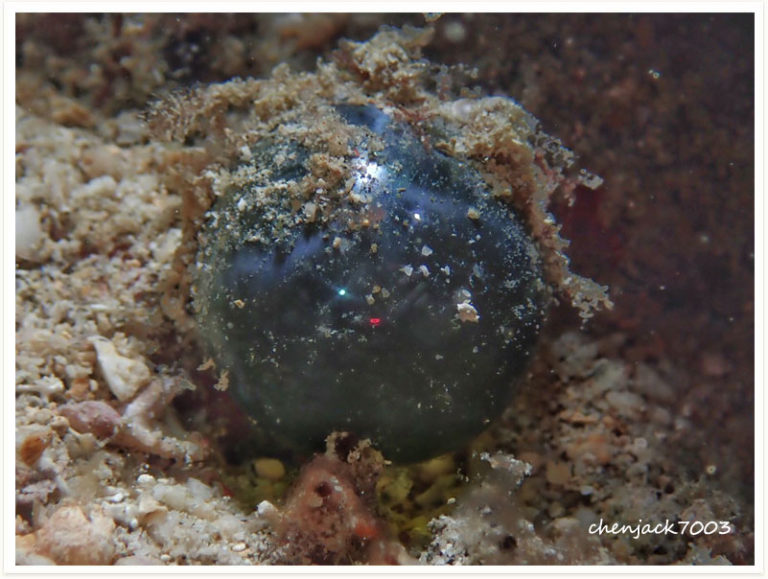毛毛虾、海藻虾
Phycocaris simulans is a shrimp species from the Hippolytidae family. The scientific name of the species was first validly published in 1916 by Kemp.
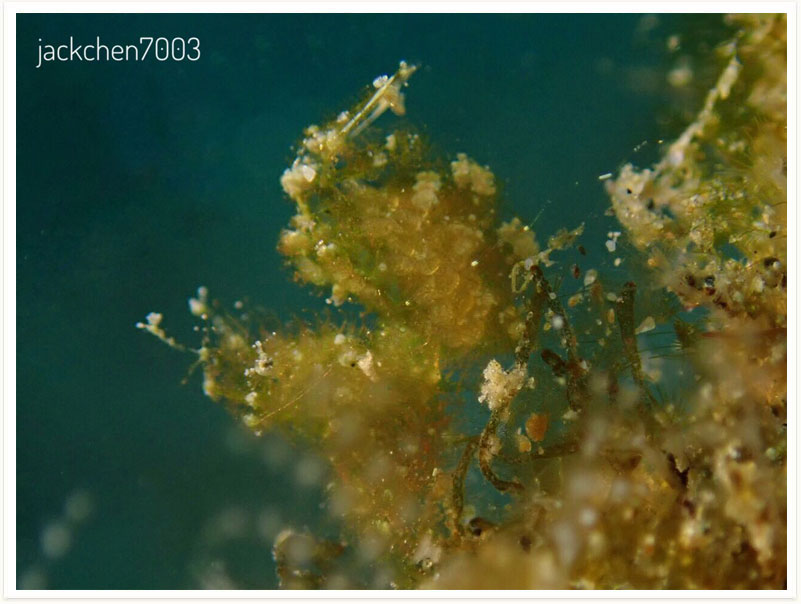
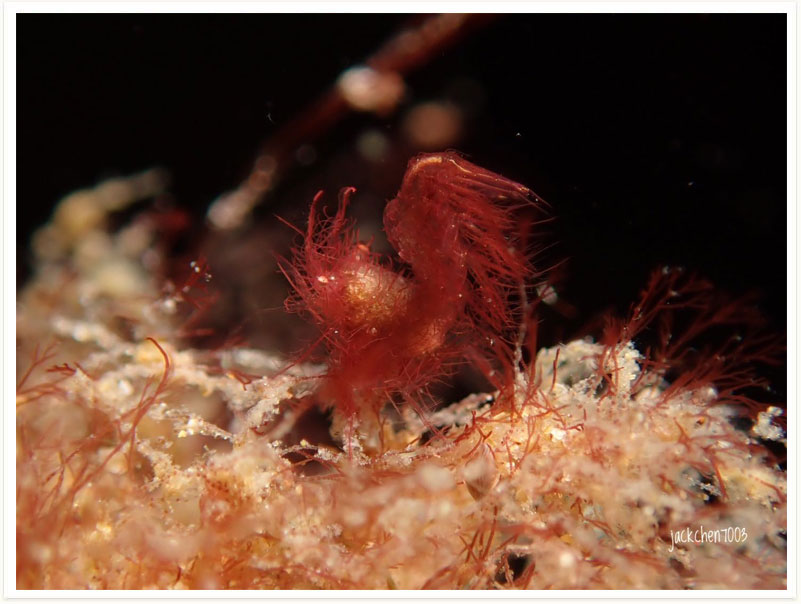

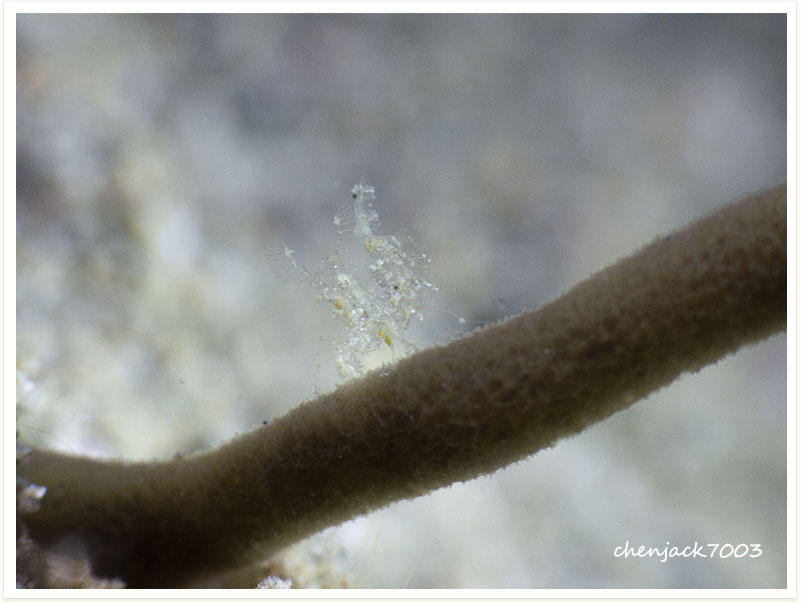
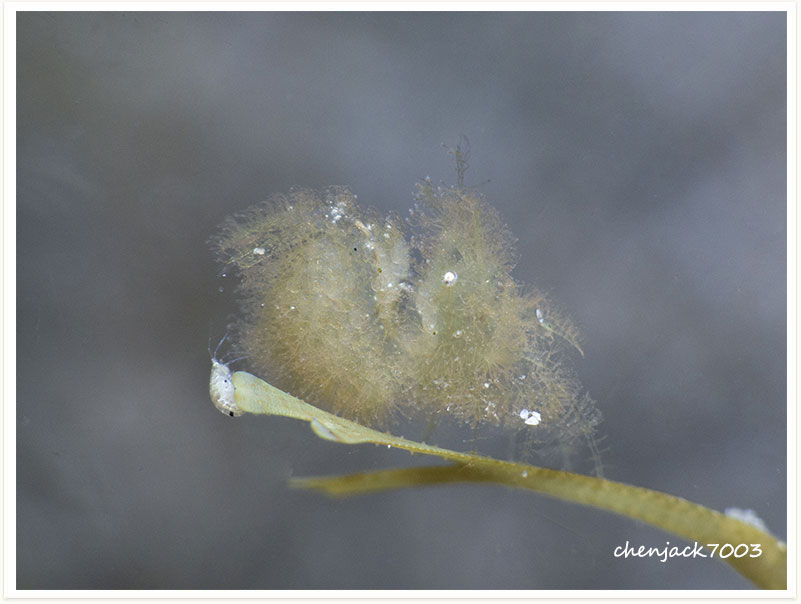
 Underwater Photography
Underwater PhotographyPhycocaris simulans is a shrimp species from the Hippolytidae family. The scientific name of the species was first validly published in 1916 by Kemp.





Latreutes pymoeus is a shrimp species from the Hippolytidae family. The scientific name of the species was first validly published in 1904 by Nobili.
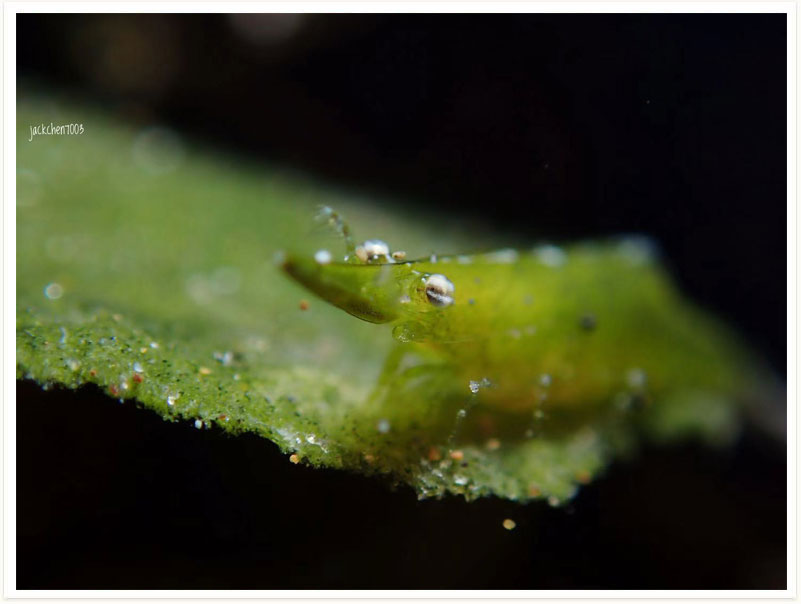
unknow
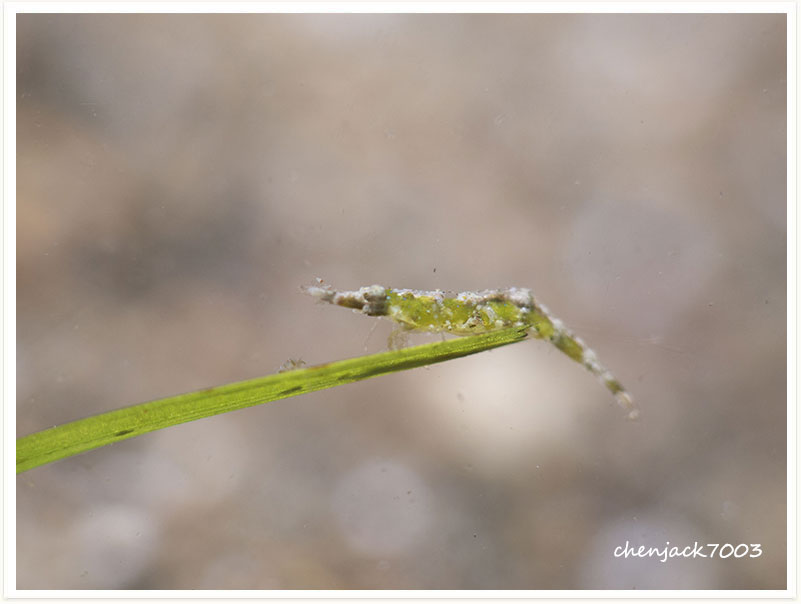
Thuridilla gracilis is a sea slug in the family Elysiidae, which is characterized by two flaps that merge on the back to form a ridge.
Like other representatives of the genus it is not well known which algae species they feed on.
Thuridilla species are quite often found as hitchhikers on live rock – but in how far they can be kept for a longer period this will depend on the coincidental presence of their preferred food items and is more a gamble than anything else.
Thuridilla carlsoni,Sapsucking Slug
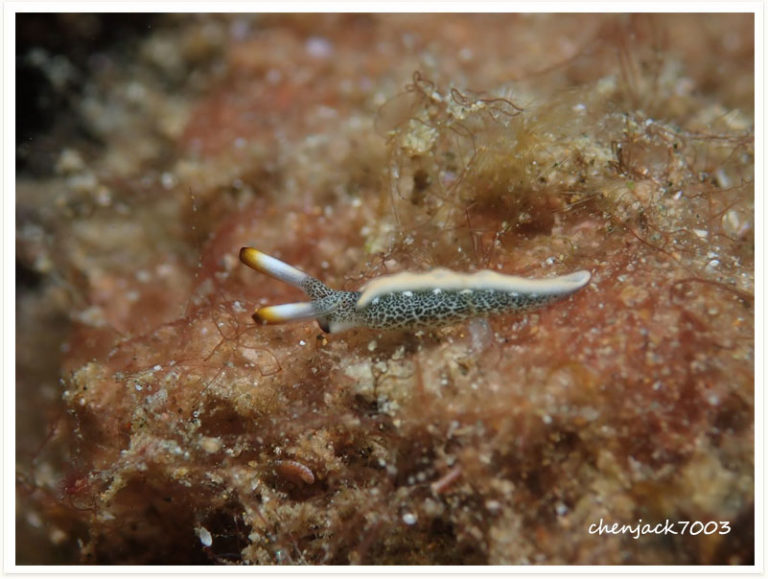
Tambja morosa can swim by movement of the body. All Tambja species feeds on bryozoan (moss animals).
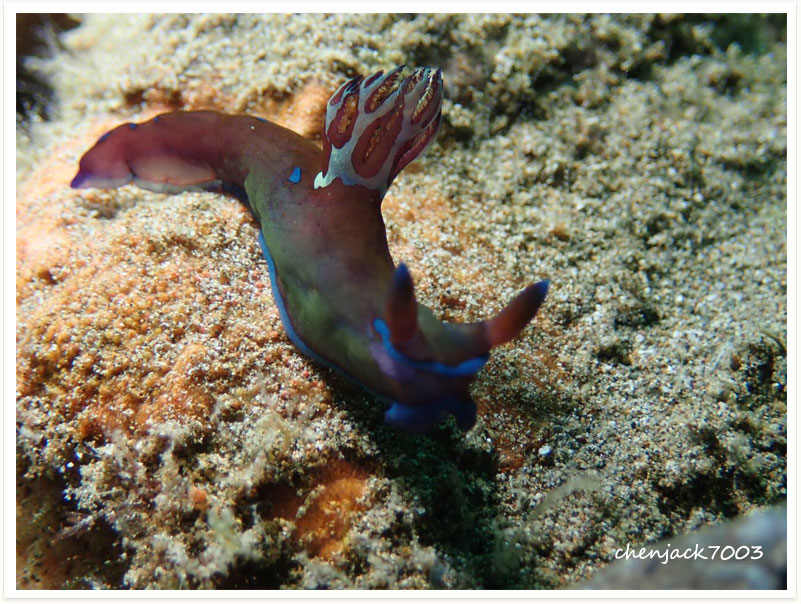
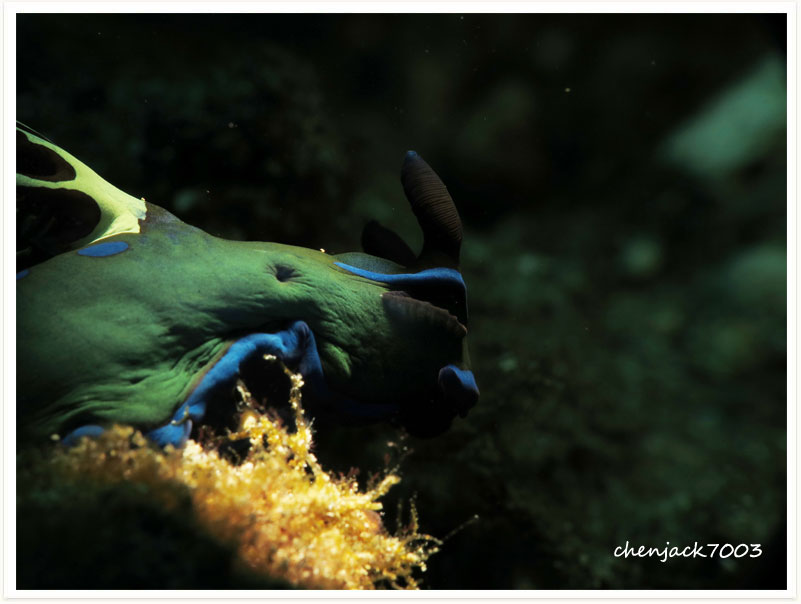
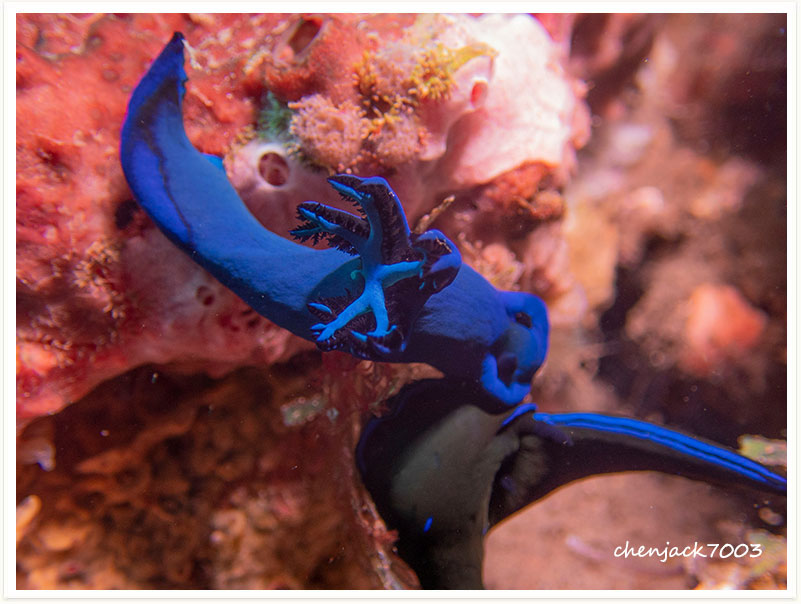
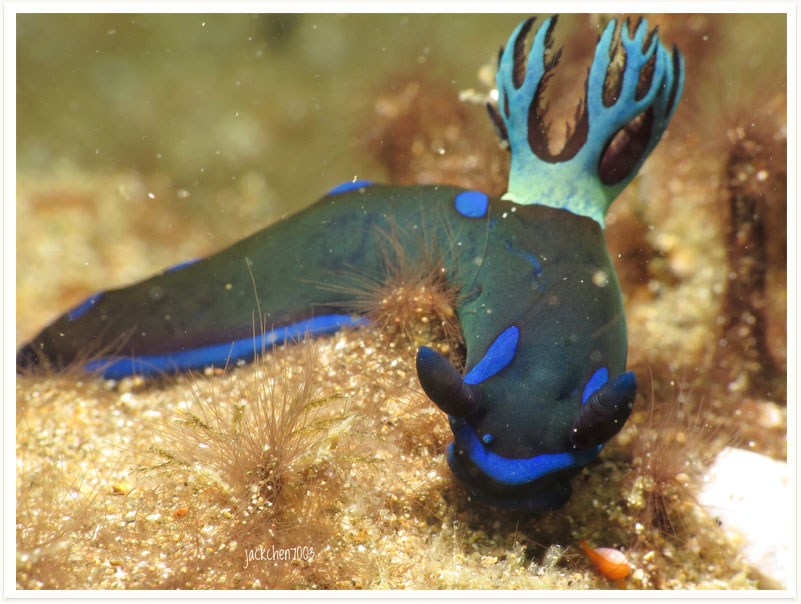
Syphonota geographica is the only species within this genus Syphonota.This sea hare differs from the other Aplysiidae genera, through the position of the rhinophores, which are further back.The body colour is whitish to green, with brown specks and a network of white lines,hence Syphonota the name ‘geographica’.Syphonota geographica lives in shallow water on sandy bottom.
Stiliger is a genus of small and minute sacoglossan or sap-sucking sea slugs. They are marine gastropod mollusks in the family Limapontiidae.
They somewhat resemble nudibranchs, but are not closely related to them. They are a rich green in color, caused by the green algae they eat.
Plakobranchus is a genus of sea slugs, sacoglossans, marine opisthobranch gastropod mollusks in the family Plakobranchidae.
Plakobranchus papua is a common inhabitant of shallow coral reef pools and lagoons. It is seldom seen as it is well-camouflaged, half buried in the coral sand. Although to my knowledge it has never been studied by algal physiologists, it deserves their attention.
Oxynoe viridis can be variable in body colour,from greenish,green or dark green to greenish-yellow with large and small blue spots.This nudibranch is feeding on a variety of species of Caulerpa algae. Oxynoe viridis can produce a sticky white secretion when attacked and/or can break off a part of their foot to distract the attacker. A new tail grows back.
Nembrotha milleri have a grey-green to dark green body.It lives and feeds on the green-ringed ascidian Sigillina signifera.

The variable neon slug feeds on ascidians and has been observed feeding on the green-ringed ascidian, Sigillina signifera
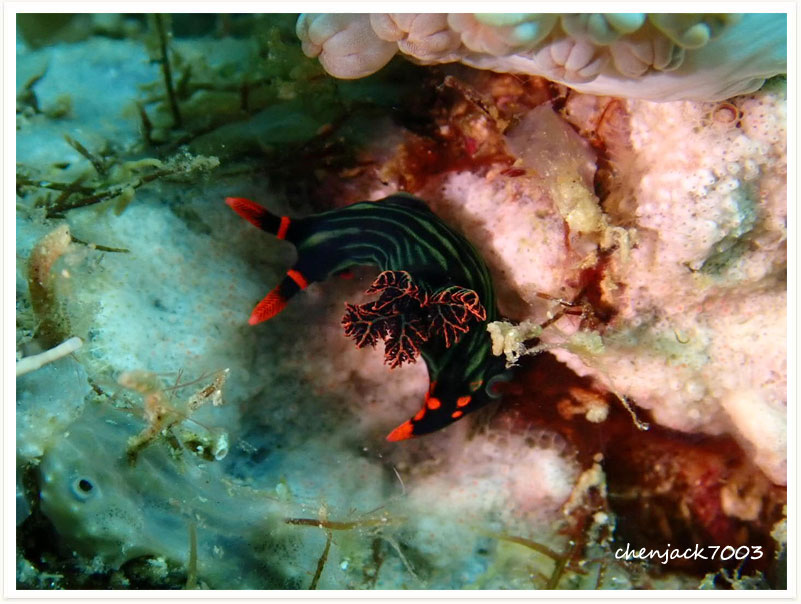
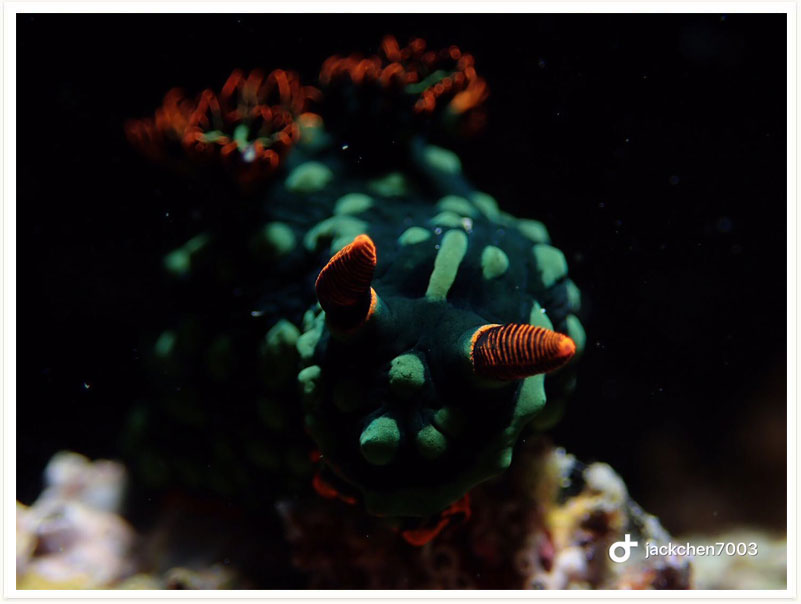
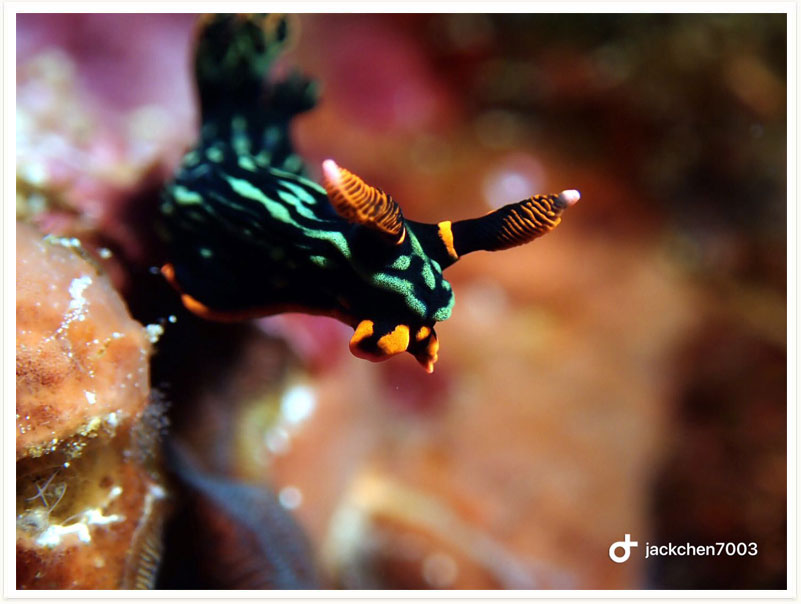
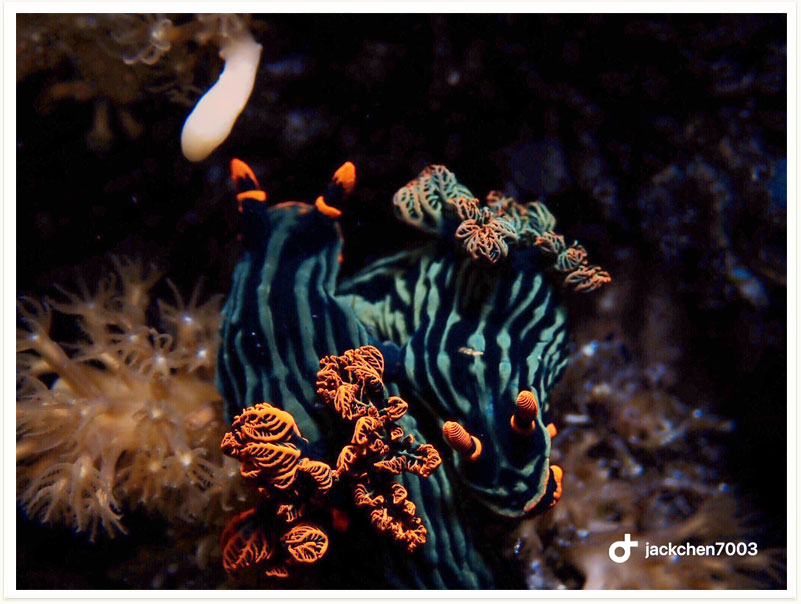
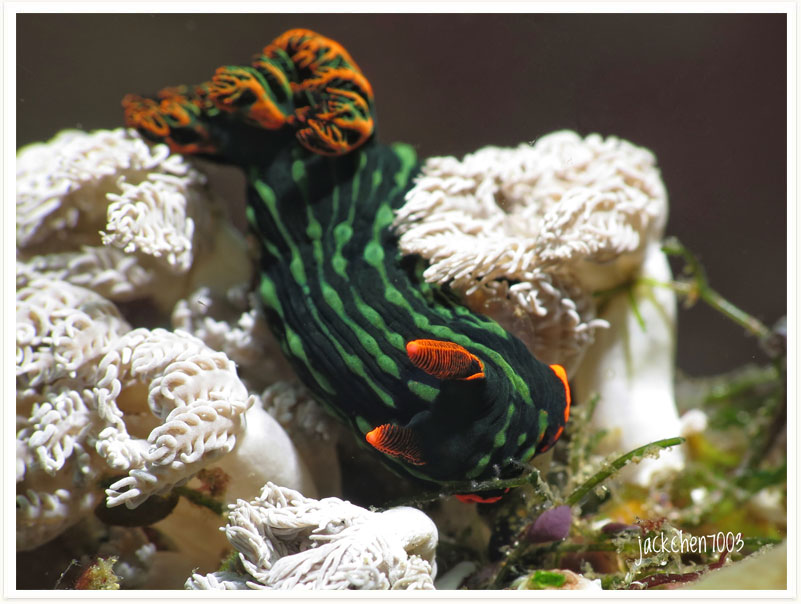
It feeds on a green compound ascidian.
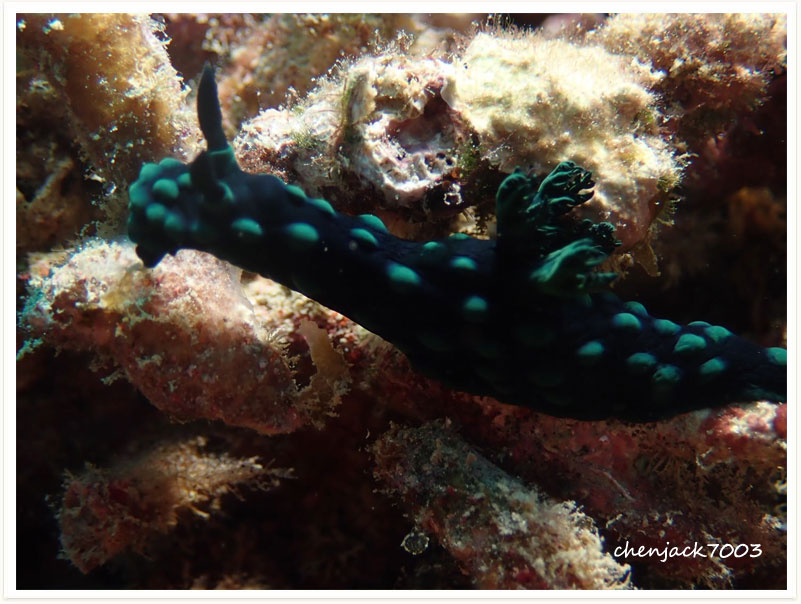
Lobiger viridis is a species of small sea snail, a marine gastropod mollusk in the family Oxynoidae.
This small sea snail has camouflage coloration, but when it is under attack it display bright colors to frightening off a predator.
The type locality for this species is Huahine
Goniobranchus geometricus is a small nudibranch which may grow to a total length of 35mm. It is variably coloured, with the ground colour ranging from a creamy brown to purple, The mantle has numerous cream-coloured bumps and has a white margin. The gills and rhinophores are white to greenish. It is very similar to Goniobranchus conchyliatus but has green-grey rhinophores and gills whilst G. conchyliatus has red ones.
Elysia pusilla is a cryptic sea slug which grows to about 3 centimetres (1.2 in) long. Its colour and shape both match that of the alga on which it is feeding; on older foliage it is flattened and a mottled pale green, on fresh new growth it is a brighter shade of green and on the cylindrical shoots that sometimes develop, it adopts a more circular cross section.
Elysia ornata can grow to about 5 centimetres (2.0 in) in length. It is a translucent greenish-yellow colour speckled with white and black. It has broad parapodia each edged with an orange band and a black margin. The rhinophores are similarly coloured with a band of orange and dark tips.
Nudibranch of genus Elysia feed primilary by piercing and sucking algae cells (chloroplasts).They are sap Sucking Slugs.Thats why Elysia is,like their food, often green.Young species are brownish or beige in colour.
Elysia nigropunctata has 3 notches along the edge of the parapodia, which are usually outlined in orange to pale yellow. The background is green with little white patches and black dots. The tip of the rhinophores are white and the posterior end of the foot is white.
Elysia expansa is a snail species in the Plakobranchidae family. The scientific name of the species was first validly published in 1924 by O’Donoghue.
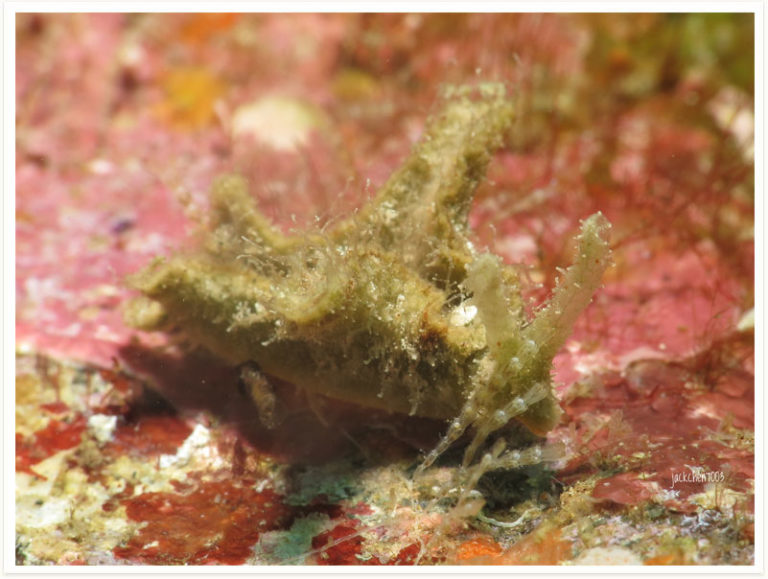
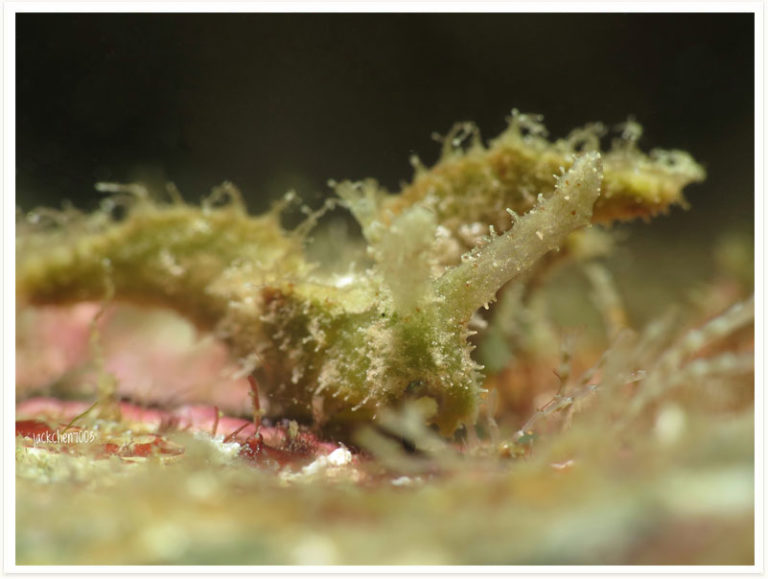
Costasiella usagi occurs in the tropical western pacific. The colour is higly variable (grren, greyish). Rhinophores with black tipps.
This species feeds on the algae Avrainvilla a fan algae.
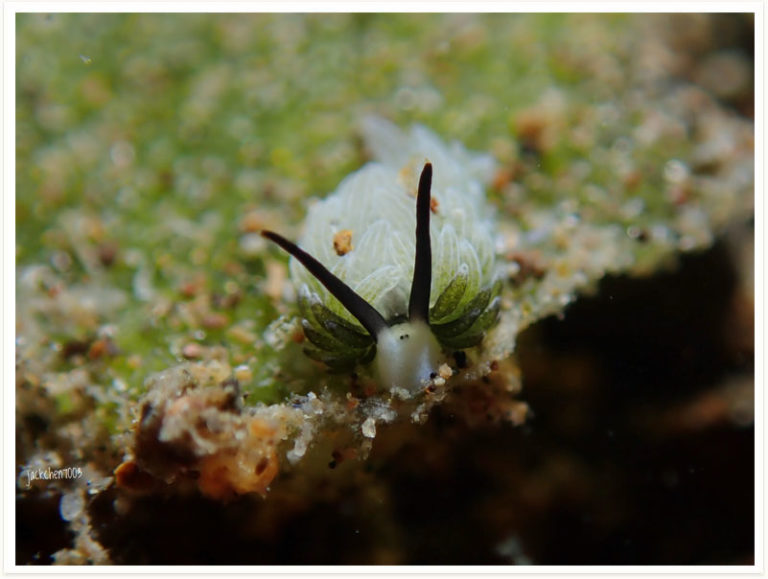
The background colour is a cream with white patches.
Costasiella kuroshimae have a white head with dark marks and a dark streak across the head just in front of the rhinophores. The rhinophores are white with black tipes. The cerata are normerly green with white tips and iridescent bright blue spots.
This sea hare is distributed in Indo-West Pacific.Aplysia oculifera have small brown eye-spots all over the head and the parapodia.The spotted sea hare often seen on sandy sheltered shores among seagrasses, but also can be found to dephts of 10 m.If they feel disturbed,they able to squirt a red ink.
Also known as: Notodoris serenae
Aegires serenae is found in Western Central Pacific and the Philippines. Characterized by its colour pattern, ranging in colour from dull white to grey-green with scattered raised black spots. The most characteristic difference is the development of 3 long extrabranchial appendages which shield the three distinct gills. Some specimens have a yellowish margin of the foot.
The moon wrasse (Thalassoma lunare) also known as the cresent wrasse or lyretail wrasse, is a species of wrasse native to the Indian Ocean and the western Pacific Ocean. It is an inhabitant of coral reefs and surrounding areas at depths from 1 to 20 m (3.3 to 65.6 ft). Moon wrasses are carnivorous and tend to prey on fish eggs and small sea-floor dwelling invertebrates. This species can reach 45 cm (18 in) in total length. It is of minor importance to local commercial fisheries and can also be found in the aquarium trade.
Solenostomus halimeda can reach a length of 6.5 cm (2.6 in), and is the smallest of the ghost pipefishes. Its body is most often green, but can be red or any other color of the algae or coral in which it is hiding. This cryptic species looks very similar to the macroalga Halimeda. This uncommon species is related to pipefishes and seahorses. It can be distinguished by its large head that is about the same length as the rest of its body. The caudal fin is small and similar in form and size to the dorsal and pectoral fins.
P. tile can reach a length of 25 cm (9.8 in). The back of the body is dark blue, while the flanks show a bluish-green strike with a black stripe along the lateral line. The lower third of the body varies from white to pinkish. The lower half of the body turns bright red at night (hence the common name neon fusilier). It is oviparous and not migratory; it feeds on zooplankton.
Ptereleotris evides, the Blackfin dartfish, is a species of dartfish native to the Indian Ocean and the western Pacific Ocean. It is a reef inhabitant and can be found at depths of from 2 to 15 metres (6.6 to 49.2 ft). This species can reach a length of 14 centimetres (5.5 in) TL. It can also be found in the aquarium trade.
The yellowface angelfish grows to a maximum length of 38 centimetres (15 in) and is laterally compressed. The mouth is just above the tip of the snout. The fins are large and rounded and are yellow, some edged with blue round the margins. The dorsal fin is set just in front of the caudal region, has a distinctive black eyespot at the base and has 13–14 spines and 16–18 soft rays. The anal fin has 3 spines and 16–18 soft rays. The scales are pale blue edged with yellow giving a reticulated pattern. The face is yellow with a dense network of brilliant blue lines on the bottom half and a plain yellow mask around the eyes. Juveniles are quite differently coloured with 6 vertical white bars separated by pale blue lines and a caudal fin barred in 2 shades of blue. The juveniles change colour gradually after reaching a length of 7 to 12 centimetres (2.8 to 4.7 in). This species can be confused with the queen angelfish (Holacanthus ciliaris) or the blue angelfish (Holacanthus bermudensis), but both these have a completely blue face and lack the caudal eyespot.
Redtoothed triggerfish are normally deep purple with bluish-green markings on their heads and glowing light blue margins on the tail lobes and fins. Just like other fish in the family Balistidae, the tail is lyre-shaped. The mouth of the triggerfish seems to be grinning and it maintains tiny red teeth that are needle sharp with two teeth in the upper jaw which can be seen when its mouth is closed. These triggerfish are one of the more peaceful triggers in the family but can become threatening with age and can perform a grunting-type sound. They have the ability to change their colour depending on their mood, food, feeding and water quality from purple to blue and to bluish-green.
Nemateleotris magnifica, the fire goby, fire fish, fire dartfish, or red fire goby is a species of dartfish native to the Indian and Pacific oceans from the eastern coast of Africa to the Hawaiian Islands and from the Austral Islands north to the Ryukyu Islands. It is an inhabitant of reefs where it can be found at depths of from 6 to 70 metres (20 to 230 ft). It is usually found just above the bottom, facing into the current, where it awaits its prey of small invertebrates.
The barred thicklip wrasse is a medium-sized fish that can reach a maximum length between 30 cm to 50 cm.
Its body is high, relatively flattened, its head is large and its terminal mouth has thick lips. Its body coloration varies according to age.
During the juvenile phase, this wrasse has a green-yellow background color with six yellow vertical lines and in between them there is thin black vertical lines which are not necessarily visible.
It is widespread in the tropical and subtropical waters of the Indo-Pacific as far north as Japan and east to the coasts of the Americas, including the Red Sea. In 2000, its presence was reported in the Mediterranean Sea; since then, it has continued to disperse and is now well established in some areas. This species is considered as part of the Lessepsian migration. It has spread rapidly through the Mediterranean from its origin in the Suez Canal, the first records being off Israel in 2000 and it had reached the southern coast of Spain and as far north as the Gulf of Lions by 2007.Scientists have determined that the fish in the Mediterranean are all descended from a small number of ancestors, possibly as a result of a single invasion event, and are not as genetically variable as their conspecifics in the Red Sea.
The camouflage grouper (Epinephelus polyphekadion) is a species of marine fish in the family Serranidae.
The camouflage grouper is widespread throughout the tropical waters of the Indo-Pacific area from the eastern coast of Africa to the French Polynesia and it is also present in the Red Sea.
The Pacific daisy parrotfish is widespread throughout the tropical waters of the Pacific region, including the Hawaiian Islands. The female has a dark coloration with four pairs of white spots on the back part of its body just before the caudal peduncle. The latter and the caudal fin are whitish with black patch. There is great variation in the coloration within the males of this species. Their body is greenish with big scales outlined with purple-blue lines, three purple-blue stripes around the mouth, an orange patch on the chick with also a white one just upper the latter.
Chlorurus microrhinos usually grows to be about 80 centimetres (31 in) long. These parrotfishes are greenish blue, with a brilliant blue band behind the corner of the mouth and a wide blue patch along the head. Rarely some individuals may be uniformly yellowish-tan. The cheek is crossed by an irregular line, below which the colour is usually greenish-yellow. Larger fishes are uniformly dark, greenish brown, turning into greenish blue only with age, but they do not undergo as radical a color change with growth as do other scarids.
The green sea turtle (Chelonia mydas), also known as the green turtle, black (sea) turtle or Pacific green turtle, is a species of large sea turtle of the family Cheloniidae. It is the only species in the genus Chelonia. Its range extends throughout tropical and subtropical seas around the world, with two distinct populations in the Atlantic and Pacific Oceans, but it is also found in the Indian Ocean.The common name refers to the usually green fat found beneath its carapace, not to the color of its carapace, which is olive to black.
Cassiopea andromeda (Upside-down jellyfish) is a type of jellyfish that usually lives in intertidal sand or mud flats, shallow lagoons, and around mangroves. This jellyfish, many times mistaken for a sea anemone, usually has its mouth upward on the bottom. Its bell, which is yellow-brown with streaks and spots that are white or pale, vibrates to make the water flow through its arms for respiration and the obtaining of food.
The fish is a small leatherjacket with a round, almost circular body, growing to a maximum of 9 centimetres (3.5 in). They are able to inflate their abdomen.
Colouration is highly variable, ranging from pale yellow-brown to dark green, and with numerous dark and light stripes, spots or ocelli.Colouration of a single fish can change during the courtship process.
The green humphead parrotfish (Bolbometopon muricatum) is the largest species of parrotfish, growing to lengths of 1.5 m (4.9 ft) and weighing up to 75 kg (165 lb).
It is found on reefs in the Indian and Pacific Oceans, from the Red Sea in the west to Samoa in the east, and from the Yaeyama Islands in the north to the Great Barrier Reef, Australia, in the south.
Amblygobius phalaena, the Sleeper Banded goby, white-barred goby, is a species of goby native to tropical reefs of the western Pacific Ocean and through the central Indo-Pacific area at depths of from 2 to 20 metres (6.6 to 65.6 ft). This species feeds by taking in mouthfuls of sand and sifting out algae, invertebrates and other organic matter. It can reach a length of 15 centimetres (5.9 in) TL. It is also of minor importance to local commercial fisheries and can also be found in the aquarium trade.
Huenia heraldica is a crab species from the Epialtidae family. The scientific name of the species was first validly published in 1837 by De Haan.
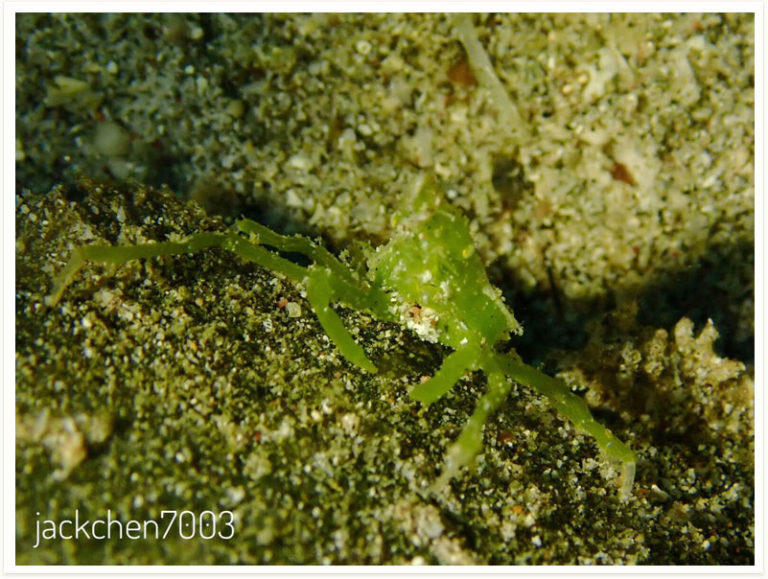
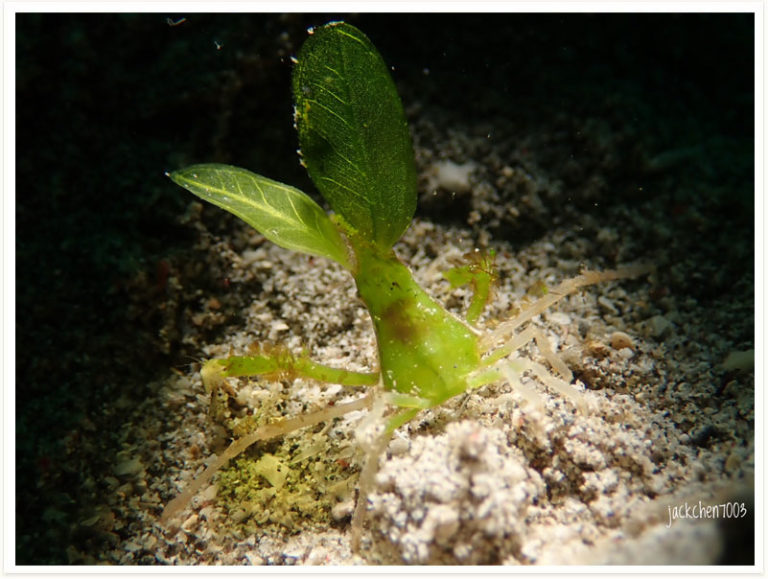

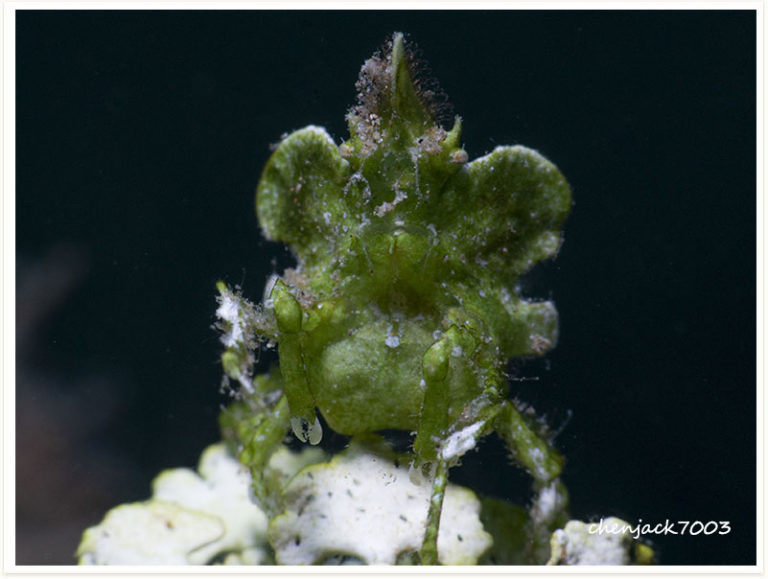
Cyclocoeloma tuberculata is a small size spider crab, its carapace reach an average length of 45mm from the rostral area to posterior tip.The back side of the carapace is rounded but the rostral area is going relatively far ahead and looks like a head with lateral position of the eyes. However, it’s quite difficult to observe the carapace’s shape on a living animal because it’s covered with anemones. The four ambulacry, when not too much decorated, are creamy color with brown bands. In the majids, the decoration is fixed on the carapace and legs via hooked hairs. The claws are quite small and are also used to decorate themselves. The reason they cover their body is to camouflage themselves from potential predators, especially during the day; C. tuberculata fixes sea anemones of the family Discosomatidae to its carapace, and soft corals of the family Xeniidae to its legs.
Valonia ventricosa, also known as bubble algae or sailor’s eyeballs[2] is a species of alga found in oceans throughout the world in tropical and subtropical regions. It is one of the largest – if not the largest – unicellular organisms.
